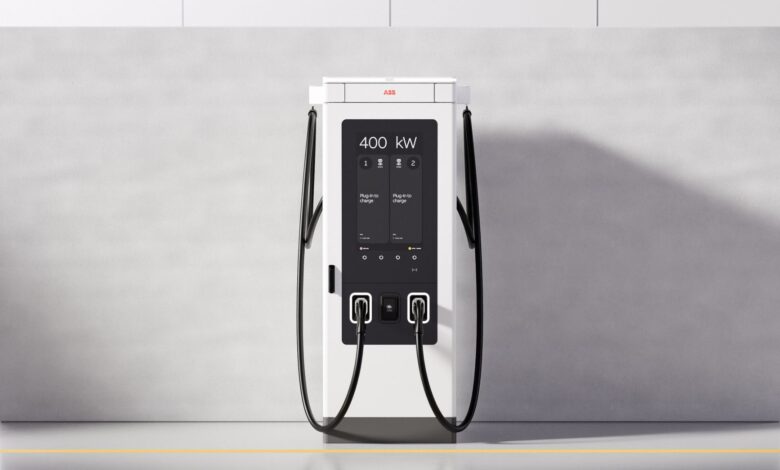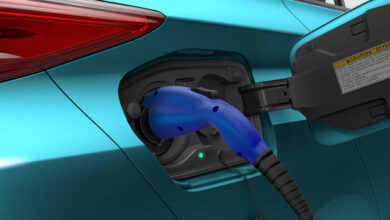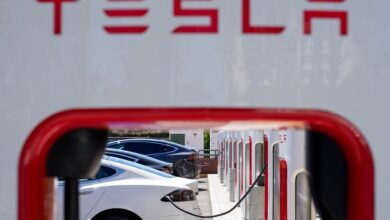ABB unveils the ‘iPhone’ of electric vehicle chargers

ABB E-mobility, the company that boasts the world’s fastest electric vehicle charger, has now taken charger infrastructure to the next level by launching the A400 today.
The company compares its newest offering to the iPhone and anticipates that the A400 will redefine the user experience for charger users, akin to how Apple revolutionized smartphones.
With the adoption of EVs rising worldwide, the competition between EV charger providers is also heating up.
Having already launched the world’s fastest charger, the Terra 360, capable of delivering 60 miles (100 km) of range in just three minutes, ABB now feels that the future of EV chargers lies not solely in charging speed but in user-friendly design.
In an interview with Interesting Engineering, Chris Nordh, the head of ABB North America, said the industry average charging success rate is 65 percent. With the A400, the company plans to increase this to 99 percent and deliver an unparalleled user experience.
The iPhone of EV chargers
As the name suggests, the A400 is a 400-kilowatt charger with two charging ports that can dynamically distribute its output, with a granularity of 50kW, depending on the requirements of the cars plugged in.
ABB prides itself on having delivered a very lean charger that is not only sleek on the exterior but also streamlined internally
“We have reduced internal cabling by over 80 percent,” added Nordh, “which will impact the total cost of ownership and ease of serviceability.”
ABB pegs the lifetime of competitor chargers at around five to six years. However, the A400 aims to deliver a charger that will work for a decade, thereby spreading the cost of ownership over an extended duration.
ABB undertook an extensive plan to integrate the charger components to achieve this vertically. The company designed and built the components to ensure higher reliability and uptimes for the chargers that will be bought by charge point operators (CPOs).
The A400 will allow the CPOs to customize the look and feel of the chargers, but it has also invested in delivering a consumer electronics-like experience for the end user.
The guided user interface, accessible through a 32-inch screen, is more intuitive than what one has seen on chargers before and simplifies the experience.
To prevent payment failures when working with other payment providers, ABB acquired a payment authorization company and brought it in-house to deliver a seamless user experience.
Innovations for performance and reliability
Under the hood, ABB has also worked to improve the performance of the charging cables. It uses an air-cooled cable capable of delivering peak charging rates of 600 amperes for 30 minutes, which is more output than liquid-cooled cables currently used in the industry.
“The reliability of the air-cooled cable is significantly higher while also costing significantly less. Again, we’re impacting the total cost of ownership equation by creating our own intellectual property and manufacturing our own silicon carbide power modules through that entire power delivery stack,” Nordh explained.
The charger box also has more sensors to help identify service issues remotely and direct the appropriate teams to address the root cause when required.
The A400 will debut at the Advanced Clean Tech (ACT) Expo, which will be held in Santa Monica, California, between May 20 and 23.
“Charging networks constitute a mission-critical transport infrastructure on the way to an energy-efficient and climate-neutral mobility era. The A400 has been designed from the ground up as a system for the reliable and cost-effective delivery of energy, enabling our customers to operate their network at the highest level, and achieving their desired economic outcome,” said Michael Halbherr, CEO of ABB E-mobility, in a statement.
“At ABB E-Mobility, we have taken key lessons from our extensive experience and are obsessed with creating a charging experience that is reliable, scalable, managed and secure, while ensuring interoperability and performance,” Halbherr added.
North told IE that the chargers’ early adopter program would go live next month, and the company plans to start production at its facility in Italy by September this year.
ABOUT THE EDITOR
Ameya Paleja Ameya is a science writer based in Hyderabad, India. A Molecular Biologist at heart, he traded the micropipette to write about science during the pandemic and does not want to go back. He likes to write about genetics, microbes, technology, and public policy.



